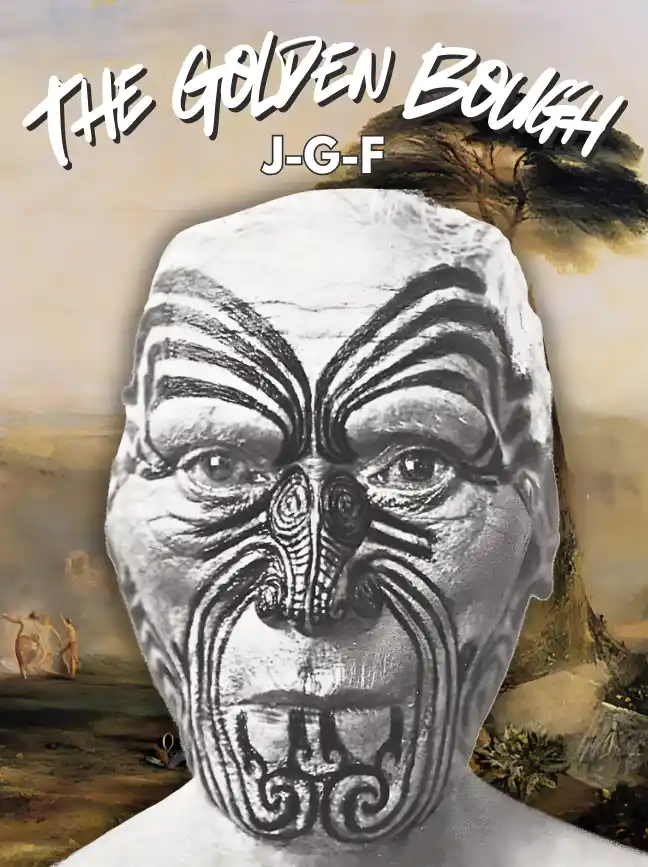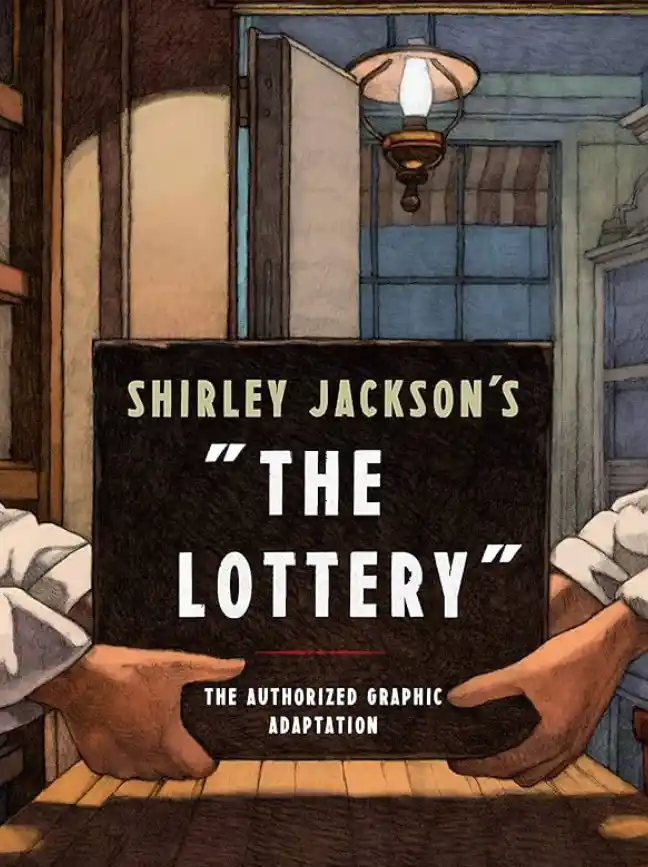CHAPTER 5
DEATH AND RESURRECTION
i
BUT when a savage names himself after an animal, calls it his brother, and refuses to kill it, the animal is said to be his totem. Accordingly in the tribes of South-Eastern Australia which we have been considering the bat and the owl, the emu-wren and the superb warbler, may properly be described as totems of the sexes. But the assignation of a totem to a sex is comparatively rare, and has hitherto been discovered nowhere but in Australia. Far more commonly the totem is appropriated not to a sex, but to a clan, and is hereditary either in the male or female line. The relation of an individual to the clan totem does not differ in kind from his relation to the sex totem; he will not kill it, he speaks of it as his brother, and he calls himself by its name. Now if the relations are similar, the explanation which holds good of the one ought equally to hold good of the other. Therefore the reason why a clan revere a particular species of animals or plants (for the clan totem may be a plant) and call themselves after it, would seem to be a belief that the life of each individual of the clan is bound up with some one animal or plant of the species, and that his or her death would be the consequence of killing that particular animal, or destroying that particular plant. This explanation of totemism squares very well with Sir George Grey’s definition of a totem or kobong in Western Australia. He says: ‘A certain mysterious connection exists between a family and its kobong, so that a member of the family will never kill an animal of the species to which his kobong belongs, should he find it asleep; indeed he always kills it reluctantly, and never without affording it a chance to escape. This arises from the family belief that some one individual of the species is their nearest friend, to kill whom would be a great crime, and to be carefully avoided. Similarly, a native who has a vegetable for his kobong may not gather it under certain circumstances, and at a particular period of the year.’* Here it will be observed that though each man spares all the animals or plants of the species, they are not all equally precious to him; far from it,
out of the whole species there is only one which is specially dear to him; but as he does not know which the dear one is, he is obliged to spare them all from fear of injuring the one. Again, this explanation of the clan totem harmonizes with the supposed effect of killing one of the totem species.
‘One day one of the blacks killed a crow. Three or four days afterwards a Boortwa (crow) [i.e. a man of the Crow clan] named Larry died. He had been ailing for some days, but the killing of his wingong [totem] hastened his death.’ Here the killing of the crow caused the death of a man of the Crow clan, exactly as, in the case of the sex-totems, the killing of a bat causes the death of a Bat-man or the killing of an owl causes the death of an Owl-woman. Similarly, the killing of his nagual causes the death of a Central American Indian, the killing of his bush soul causes the death of a Calabar negro, the killing of his tamaniu causes the death of a Banks Islander, and the killing of the animal in which his life is stowed away causes the death of the giant or warlock in the fairy tale.
Sex totems and clan to-tems may both be based on the notion
that men and women keep their external souls in their totems,
whether these are animals, plants, or what not.
The savage may imagine his life to be bound up with that of
more animals than one at the same time; for many savages think
that every person has more souls than one.
Thus it appears that the story of ‘The giant who had no heart in his body’ may perhaps furnish the key to the relation which is supposed to subsist between a man and his totem. The totem, on this theory, is simply the receptacle in which a man keeps his life, as Punchkin kept his life in a parrot.*
ii
This view of totemism throws light on a class of religious rites of which no adequate explanation, so far as I am aware, has yet been offered. Amongst many savage tribes, especially such as are known to practise totemism, it is customary for lads at puberty to undergo certain initiatory rites, of which
one of the commonest is a pretence of killing the lad and bringing him to life again. Such rites become intelligible if we suppose that their substance consists in extracting the youth’s soul in order to transfer it to his totem. For the extraction of his soul would naturally be supposed to kill the youth or at least to throw him into a death-like trance, which the savage hardly distinguishes from death. His recovery would then be attributed either to the gradual recovery of his system from the violent shock which it had received, or, more probably, to the infusion into him of fresh life drawn from the totem. Thus the essence of these initiatory rites, so far as they consist in a simulation of death and resurrection, would be an exchange of life or souls between the man and his totem. The primitive belief in the possibility of such an exchange of souls comes clearly out in the story of the Basque hunter who affirmed that he had been killed by a bear, but that the bear had, after killing him, breathed its own soul into him, so that the bear’s body was now dead, but he himself was a bear, being animated by the bear’s soul. This revival of the dead hunter as a bear is exactly analogous to what, on the theory here suggested, is supposed to take place in the ceremony of killing a lad at puberty and bringing him to life again.
The lad dies as a man and comes to life again as an animal; the animal’s soul is now in him, and his human soul is in the animal. With good right, therefore, does he call himself a Bear or a Wolf, etc., according to his totem; and with good right does he treat the bears or the wolves, etc., as his brethren, since in these animals are lodged the souls of himself and his kindred.
This view of totemism may help to explain the rite of death and
resurrection which forms part of many initiatory ceremonies
among savages.
Among the tribes settled on the southern coast of New South Wales, of which the Coast Murring tribe may be regarded as typical, the drama of resurrection from the dead was exhibited in a graphic form to the novices at initiation. Before they were privileged to witness this edifying spectacle they had been raised to the dignity of manhood by an old man, who promoted them to their new status by the simple process of knocking a tooth out of the mouth of each with the help of a wooden chisel and
hammer. The ceremony of the resurrection has been described for us in detail by an eye-witness, the late Dr A. W. Howitt, one of the best authorities on the customs of the Australian aborigines. The scene selected for the sacred drama was the bottom of a deep valley, where a sluggish stream wound through a bed of tall sharp-edged sedge. Though the hour was between ten and eleven o’clock in the morning, the sun had but just peeped over the mountains which enclosed the valley like a wall on the east; and while the upper slopes, clothed with a forest of tall rowan trees, looked warm and bright in sunshine, which shot between the grey stems and under the light feathery foliage of the trees, all the bottom of the dell was still in deep shadow and dank with the moisture of the night’s rain. While the novices rested and warmed themselves at a crackling fire, the initiated men laid their heads together, prepared a stock of decorations made of stringy bark, and dug a grave. There was some discussion as to the shape of the grave, but the man who was to be buried in it decided the question by declaring that he would be laid in it on his back at full length. He was a man of the eagle-hawk totem and belonged to the tribal subdivision called Yibai.
So while two men under his directions were digging the grave with sticks in the friable granitic soil, he superintended the costume of the other actors in the drama. Sheets of bark were beaten out into fleeces of stringy fibre, and in these garments six performers were clothed from head to foot so that not even a glimpse could be obtained of their faces. Four of them were tied together by a cord which was fastened to the back of their heads, and each of them carried two pieces of bark in his hands. The other two walked free, but hobbled along bent double and supporting their tottery steps on staves to mark the weight of years; for they played the part of two medicine-men of venerable age and great magical power. By this time the grave was ready, and the eagle-hawk man stretched himself in it at full length on a bed of leaves, his head resting on a rolled-up blanket, just as if he were a corpse. In his two hands, crossed on his chest, he held the stem of a young tree (Persoonia linearis), which had been pulled up by the roots and now stood planted on his chest, so that the top of it rose several feet above the level of the ground. A light covering of dried sticks filled the grave, and dead leaves, tufts of grass, and small plants were artistically arranged over them so as to complete the illusion. All being now ready, the novices were led by their sisters’ husbands to the grave and placed in a row beside it, while a singer, perched on the trunk of a fallen tree at the head of the grave, crooned
a melancholy ditty, the song of Yibai. Though the words of the song consisted merely of a monotonous repetition of the words Burrin-burrin Yibai, that is, Stringy-bark Yibai, they were understood to refer to the eagle- hawk totem, as well as to the tribal subdivision of the buried man. Then to the slow, plaintive but well-marked air of the song the actors began to move forward, winding among the trees, logs, and rocks. On came the four disguised men, stepping in time to the music, swaying from side to side, and clashing their bark clappers together at every step, while beside them hobbled the two old men keeping a little aloof to mark their superior dignity. They represented a party of medicine-men, guided by two reverend seniors, who had come on pilgrimage to the grave of a brother medicine- man, him of the eagle-hawk totem, who lay buried here in the lonely valley, now illumined by the warm rays of the sun; for by this time the morning was wearing on to noon. When the little procession, chanting an invocation to Daramulun, had defiled from among the rocks and trees into the open, it drew up on the side of the grave opposite to the novices, the two old men taking up a position in the rear of the dancers. For some time the dance and song went on till the tree that seemed to grow from the grave began to quiver. ‘Look there!’ cried the sisters’ husbands to the novices, pointing to the trembling leaves. As they looked, the tree quivered more and more, then was violently agitated and fell to the ground, while amid the excited dancing of the dancers and the chanting of the tuneful choir the supposed dead man spurned from him the superincumbent mass of sticks and leaves, and springing to his feet danced his magic dance in the grave itself, and exhibited in his mouth the magic substances which he was supposed to have received from Daramulun in person.
A drama of resurrection from the dead used to be shewn to
novices at initiation in some tribes of New South Wales. Dr
Howitt’s description of the scene.
The seeming dead man in the grave.
The resurrection from the grave.
In certain districts of Viti Levu, the largest of the Fijian Islands, the drama of death and resurrection used to be acted with much solemnity before the eyes of young men at initiation. The ceremonies were performed
in certain sacred precincts of oblong shape, enclosed by low walls or rows of stones but open to the sky. In these open-air temples of the dead the ceremony of initiating young men was performed as a rule every year at the end of October or the beginning of November, which was the commencement of the Fijian New Year; hence the novices who were initiated at that season went by the name of Vilavou or New Year’s Men.
The exact time for celebrating the rite was determined by the flowering of the ndrala tree (Erythrina); but it roughly coincided with the New Year of the Tahitians and Hawaiians, who dated the commencement of the year by observation of the Pleiades. The highlanders of Fiji, who alone celebrated these rites, did not trouble their heads about the stars. As a preparation for the solemnity the heads of the novices were shaved and their beards, if they had any, were carefully eradicated. On four successive days they went in procession to the temple and there deposited in the Holy of Holies their offerings of cloth and weapons to the ancestral spirits. But on the fifth and great day of the festival, when they again entered the sacred ground, they beheld a sight which froze their souls with horror. Stretched on the ground was a row of dead or seemingly dead and murdered men, their bodies cut open and covered with blood, their entrails protruding. At the further end sat the High Priest, regarding them with a stony glare, and to reach him the trembling novices had to crawl on hands and knees over the ghastly blood- bedabbled corpses that lay between. Having done so they drew up in a line before him. Suddenly he blurted out a piercing yell, at which the counterfeit dead men started to their feet and ran down to the river to cleanse themselves from the blood and guts of pigs with which they were beslobbered. The High Priest now unbent his starched dignity, and skipping from side to side cried in stridulous tones, ‘Where are the people of my enclosure? Are they gone to Tonga Levu? Are they gone to the deep sea?’ He was soon answered by a deep-mouthed chant, and back from the river marched the dead men come to life, clean, fresh, and garlanded, swaying their bodies in time to the music of their solemn hymn. They took their places in front of the novices and a religious silence ensued. Such was the drama of death and resurrection.
The drama of death and resurrection used to be enacted before
young men at initiation in some parts of Fiji.
Description of the rite.
The mimic death.
The mimic resurrection.
The Akikuyu of East Africa ‘have a curious custom which requires that every boy just before circumcision must be born again. The mother stands up with the boy crouching at her feet; she pretends to go through all the labour pains, and the boy on being reborn cries like a babe and is washed.
He lives on milk for some days afterwards.’ A fuller description of the ceremony was given by a member of the Kikuyu tribe as follows: ‘A day is appointed, any time of year, by father and mother. If the father is dead another elder is called in to act as proxy in his stead, or if the mother is not living another woman to act in her place. Any woman thus acting as representative is looked upon in future by the boy as his own mother. A goat or sheep is killed in the afternoon by any one, usually not by the father, and the stomach and intestines reserved. The ceremony begins in the evening. A piece of skin is cut in a circle, and passed over one shoulder of the candidate and under the other arm. The stomach of the goat is similarly treated and passed over the other shoulder and under the other arm. All the boy’s ornaments are removed, but not his clothes. No men are allowed inside the hut, but women are present. The mother sits on a hide on the floor with the boy between her knees. The sheep’s gut is passed round the woman and brought in front of the boy. The woman groans as in labour, another woman cuts the gut, and the boy imitates the cry of a new-born infant. The women present all applaud, and afterwards the assistant and the mother wash the boy. That night the boy sleeps in the same hut as the mother.’ Here the cutting of the sheep’s gut, which unites the mother to the boy, is clearly an imitation of severing the navel string. Nor is it boys alone who are born again among the Akikuyu. ‘Girls go through the rite of second birth as well as boys. It is sometimes administered to infants. At one time the new birth was combined with circumcision, and so the ceremony admitted to the privileges and religious rites of the tribe. Afterwards trouble took place on account of mere boys wishing to take their place alongside of the young men and maintaining they were justified in doing so. The old men then settled the matter by separating the two. Unless the new birth has been administered the individual is not in a position to be admitted to circumcision, which is the outward sign of admittance to the nation. Any who have not gone through the rite cannot inherit property, nor take any
part in the religious rites of the country.’ For example, a man who has not been born again is disqualified for carrying his dying father out into the wilds and for disposing of his body after death. The new birth seems to take place usually about the tenth year, but the age varies with the ability of the father to provide a goat, whose guts are necessary to enable the boy or girl to be born again in due form.
Ritual of the new birth among the Akikuyu of British East
Africa.
Among the Indians of Virginia, an initiatory ceremony, called Huskanaw, took place every sixteen or twenty years, or oftener, as the young men happened to grow up. The youths were kept in solitary confinement in the woods for several months, receiving no food but an infusion of some intoxicating roots, so that they went raving mad, and continued in this state eighteen or twenty days. ‘Upon this occasion it is pretended that these poor creatures drink so much of the water of Lethe that they perfectly lose the remembrance of all former things, even of their parents, their treasure, and their language. When the doctors find that they have drunk sufficiently of the Wysoccan (so they call this mad potion), they gradually restore them to their senses again by lessening the intoxication of their diet; but before they are perfectly well they bring them back into their towns, while they are still wild and crazy through the violence of the medicine. After this they are very fearful of discovering anything of their former remembrance; for if such a thing should happen to any of them, they must immediately be Huskanaw’d again; and the second time the usage is so severe that seldom any one escapes with life. Thus they must pretend to have forgot the very use of their tongues, so as not to be able to speak, nor understand anything that is spoken, till they learn it again. Now, whether this be real or counterfeit, I don’t know; but certain it is that they will not for some time take notice of anybody nor anything with which they were before acquainted, being still under the guard of their keepers, who constantly wait upon them everywhere till they have learnt all things perfectly over again. Thus they unlive their former lives, and commence men by forgetting that they ever have been boys.’*
Rites of initiation among the Indians of Virginia: pretence of the
novices that they have forgotten their former life.
Thus, on the theory here suggested, wherever totemism is found, and wherever a pretence is made of killing and bringing to life again the novice at initiation, there may exist or have existed not only a belief in the possibility of permanently depositing the soul in some external object— animal, plant, or what not—but an actual intention of so doing. If the question is put, why do men desire to deposit their life outside their bodies? the answer can only be that, like the giant in the fairy tale, they think it safer to do so than to carry it about with them, just as people deposit their money with a banker rather than carry it on their persons. We have seen that at critical periods the life or soul is sometimes temporarily stowed away in a safe place till the danger is past. But institutions like totemism are not resorted to merely on special occasions of danger; they are systems into which every one, or at least every male, is obliged to be initiated at a certain period of life. Now the period of life at which initiation takes place is regularly puberty; and this fact suggests that the special danger which totemism and systems like it are intended to obviate is supposed not to arise till sexual maturity has been attained, in fact, that the danger apprehended is believed to attend the relation of the sexes to each other. It would be easy to prove by a long array of facts that the sexual relation is associated in the primitive mind with many serious perils; but the exact nature of the danger apprehended is still obscure.* We may hope that a more exact acquaintance with savage modes of thought will in time disclose this central mystery of primitive society, and will thereby furnish the clue, not only to totemism, but to the origin of the marriage system.
The motive for attempting to deposit the soul in a safe place
outside of the body at puberty may have been a fear of the
dangers which, according to primitive notions, attend the union
of the sexes.






